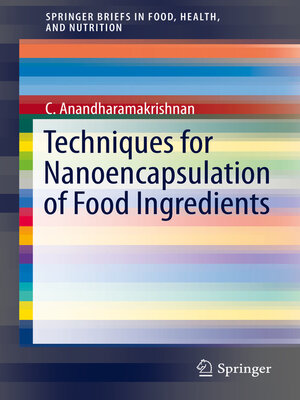Techniques for Nanoencapsulation of Food Ingredients
ebook ∣ SpringerBriefs in Food, Health, and Nutrition
By C. Anandharamakrishnan

Sign up to save your library
With an OverDrive account, you can save your favorite libraries for at-a-glance information about availability. Find out more about OverDrive accounts.
Find this title in Libby, the library reading app by OverDrive.



Search for a digital library with this title
Title found at these libraries:
| Library Name | Distance |
|---|---|
| Loading... |
Nanoencapsulation has the potential to improve human health through its capacity to both protect bioactive compounds and release them at a specific time and location into various substances, including food. Numerous nanoencapsulation technologies have emerged in recent years, each with its own advantages and disadvantages. The goal of this Brief is to discuss the various nanoencapsulation technologies, such as emulsification, coacervation, inclusion encapsulation, anti-solvent precipitation, nanoprecipitation, freeze drying, and spray drying, including their limitations. Recent safety and regulatory issues concerning the various nanoencapsulation technologies will also be covered.







